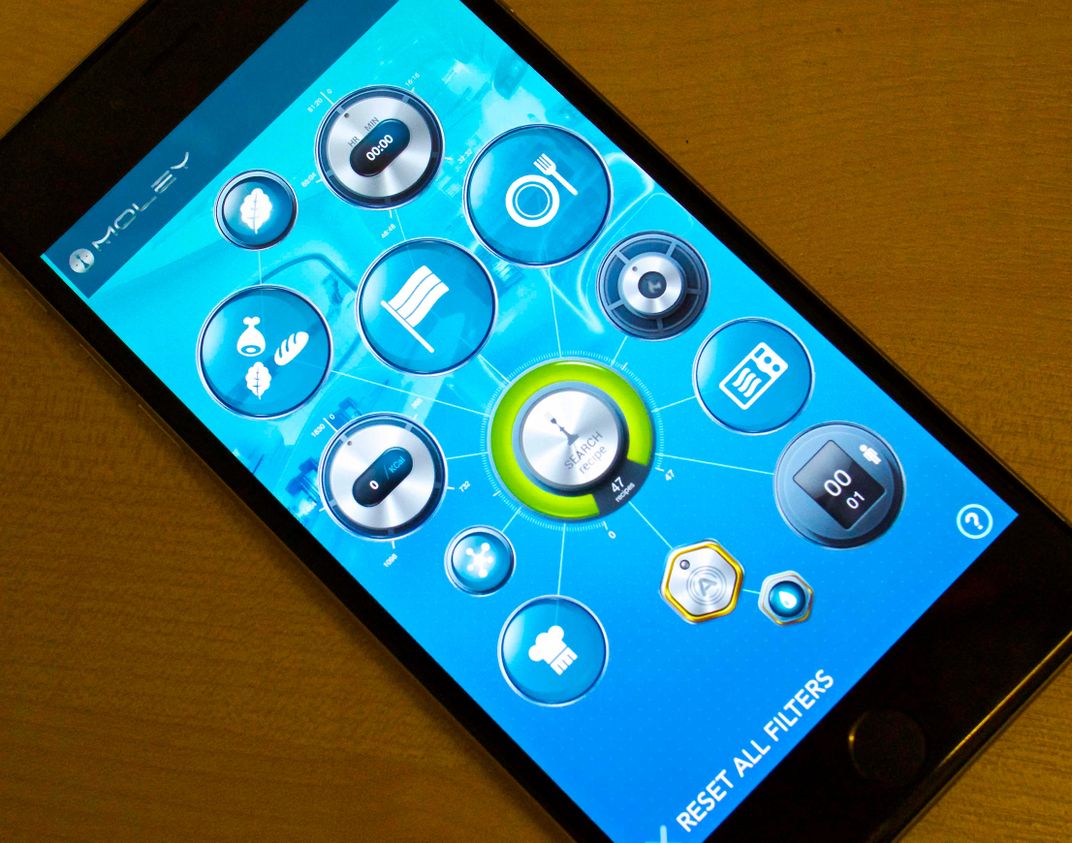This Robot Will Make You Dinner
Moley Robotics is developing a robotic kitchen that can prepare a meal from start to finish—cleanup included
/https://tf-cmsv2-smithsonianmag-media.s3.amazonaws.com/filer/b5/da/b5da6026-d8d9-4b87-8722-e3f2927be215/moley_kitchen_of_the_future.png)
The disembodied robot arms look like they’re conducting an orchestra as they glide back and forth over the stove top, waving their articulated fingers. But the robot isn’t making music, it’s making dinner.
Mounted above a small counter, stove and sink, the two arms are part of a robotic kitchen, developed by UK-based Moley Robotics, that prepares meals from digital recipes. Users select the meal they want from an online database, enter the number of people that are eating and then set out pre-prepped ingredients. They tell the robot when to start, and, sure enough, it makes shrimp risotto, say, or eggplant parmigiana. The unit has an attached fridge and cabinet, which the robot can access, and a built-in dishwasher, so it can clean up after itself.
Computer scientist Mark Oleynik dreamed up Moley’s robotic kitchen in 2014, when he was sick of eating out and wanted good food at home. He'd worked in public health. Before Moley, he founded a company called Medstarnet, which helped hospitals get medical devices. Ultimately, Oleynik's goal is to make eating fresh, healthy food effortless. He decided handing over the work of getting food on the table to a robot was a way to do that.
Oleynik worked with the London-based Shadow Robot Company, which also makes robotic hands for NASA's Robonaut program, to develop the cooking robot. The hands are made of 20 motors, 24 joints and 129 sensors. According to Rich Walker, Shadow Robot's managing director, they replicate the fine movements of human hands. They’re deft enough that they can deal with a whisk or a blender, although they’re not yet programmed for chopping. Moley Robotics worked with Shadow Robot and a team from Stanford to develop an algorithm for the robot to follow, so it knows when to add ingredients and how to incorporate them.
The robot has learned 50 recipes by mimicking human chefs who, for the sake Moley's recipe database, wore motion sensors on their hands as they cooked. Tim Anderson, the 2011 winner of the BBC’s MasterChef competition and owner of Japanese soul food restaurant Nanban in London, came up with the first batch of recipes—crab bisque, for example, and cod with pesto sauce, all with nutritional information included. Moley is recruiting other chefs to add recipes. Eventually, users may be able to upload videos of themselves preparing family recipes. The robot could then learn the recipes from these videos and take over in the making of Grandma's marinara.
In addition to the touch screen on the unit, Moley Robotics is developing an app, so that owners of the kitchen can select a meal from the iTunes-like recipe library, even when they are away from home. The robot will start making dinner just as they're leaving work.

Moley debuted the chefbot at Hannover Messe, an industrial trade show in Germany in April. In May, it won the “Best of the Best” award at the Consumer Electronics Show Asia.
Oleynik and his team are still building the app and working out the kinks, like how to teach the robot to chop, but they suspect the robotic kitchens could be available in 2018 for about $35,000. A pretty penny, though Oleynik argues the cost is on par with an average kitchen remodel.
/https://tf-cmsv2-smithsonianmag-media.s3.amazonaws.com/accounts/headshot/DSC_0196_2.JPG)


/https://tf-cmsv2-smithsonianmag-media.s3.amazonaws.com/accounts/headshot/DSC_0196_2.JPG)